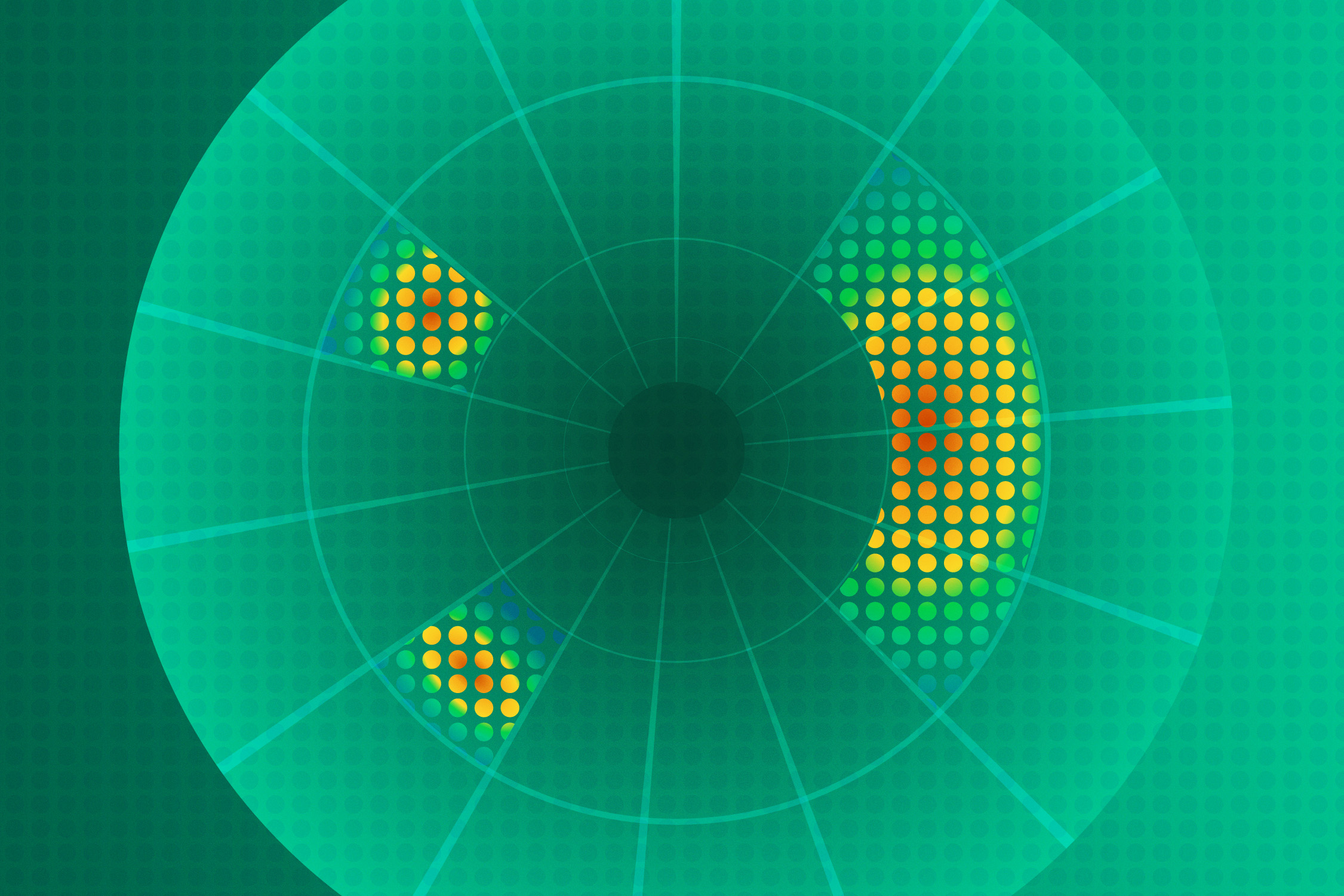Renegade Particles
In recent experiments, elusive subatomic particles stubbornly defy expectations.
- Craig Tyler, Editor

Neutrinos love controversy. And earlier this year, evidence for a new type of neutrino, whose existence was first implied by a Los Alamos experiment in the 1990s, was both amplified and refuted.
Neutrinos, lightweight and thoroughly invisible subatomic particles, weren’t even supposed to exist until it was discovered that the radioactive beta-decay process needs them to conserve energy and momentum. Then they weren’t supposed to have any mass, until it was discovered that they spontaneously transform, or “oscillate,” from one variety, or “flavor,” to another, which requires mass. They certainly weren’t supposed to come in more than three flavors (no other fundamental matter particle seems to) or behave asymmetrically with respect to their antimatter counterparts, but now both acts of defiance may be necessary to explain a resilient collection of measurement anomalies.
All along, Los Alamos has been at the forefront of the neutrino oscillation mystery. It began with the Lab’s Liquid Scintillator Neutrino Detector (LSND) experiment—for a long time, the only outlier in a suite of otherwise consistent neutrino-oscillation experiments. LSND's results agreed with those of other experiments, indicating that neutrinos oscillate from one flavor to another. But the oscillation parameters depend on the relative neutrino masses, and LSND’s measurements implied much larger masses than those obtained elsewhere. Like so many things from the 90s (sagging pants and transparent cola spring to mind), the LSND results didn’t make much sense.

So vexing were the results that a follow-up experiment was commissioned expressly to confirm or disprove them. That experiment, MiniBooNE (Mini Booster Neutrino Experiment)—designed in part by Los Alamos scientists and operating at the Fermi National Accelerator Laboratory (Fermilab) in Illinois since 2002—proved everybody right. In neutrino mode, MiniBooNE initially agreed with the consensus of neutrino experiments, producing results consistent with small neutrino masses. But when it used antineutrinos instead, it agreed with LSND, also an antineutrino experiment, requiring much larger neutrino masses. Because particle and antiparticle masses are identical, MiniBooNE and LSND together require additional neutrino flavors with masses greatly exceeding those of the three original flavors. Yet other high-precision cosmological data sets strongly restrict the number of active neutrino flavors to just the original three.
To fit the bill, then, physicists suggested there might be one or more additional flavors of sterile neutrino, in addition to the three active flavors. Sterile neutrinos are so named because they would never interact with anything (except via gravity, to which nothing is immune). That means they wouldn’t show up in the cosmological data but could still appear when neutrinos oscillate from one flavor to another. Then, when a known number of neutrinos is fired at a detector, and the detector registers fewer than it’s supposed to, researchers might infer that the missing neutrinos oscillated from an active flavor to a sterile one, as though the particles had oscillated right out of existence.
Such disappearances have been reported periodically at experiments around the world, especially those using antineutrinos produced by nuclear power reactors. Earlier this year, the Daya Bay reactor-based experiment in China reported the highest-precision measurement to date of the possible sterile-neutrino signal. Yet by late summer, a large neutrino observatory called IceCube (so named because it is set within a cubic kilometer of ice at the South Pole), announced that it had firmly ruled out the sterile neutrino within the expected mass range—that is, for the quantity directly probed, denoted ∆m2, between 0.1 and 1.0 square electronvolts (eV2). A sterile neutrino with a mass outside that range could still exist according to the IceCube data, and possibly explain the LSND signal, but it wouldn’t easily explain the MiniBooNE data. (A sterile neutrino measurement of ∆m2 = 1.75 eV2 might satisfy all the data, barely; that will be investigated by new experiments over the next year.)
So what is a major research institution with a conflicted history in neutrino physics to do in the face of such consistently inconsistent results? Double down to root out the source of the discrepancy, that’s what. Los Alamos is currently working on three more detectors—ICARUS (Imaging Cosmic And Rare Underground Signals), SBND (Short-Baseline Near Detector), and MicroBooNE—to be staged at varying distances along the same neutrino beamline at Fermilab with MiniBooNE.
Each of the three is a liquid-argon time-projection chamber, a new and advanced technology for capturing complex particle collisions and reconstructing all the particle trajectories. This will provide more comprehensive information on neutrino events than physicists have had in the past. In addition, Los Alamos recently finished constructing its MiniCAPTAIN detector (Mini Cryogenic Apparatus for Precision Tests of Argon Interactions with Neutrinos) and installed it in an accelerator beam at the Los Alamos Neutron Science Center. Also a liquid-argon detector, it will be used to reconstruct neutron interactions for the purpose of improving scientists’ understanding of the detector response, thereby enabling a more accurate interpretation of upcoming neutrino events in the new detectors at Fermilab.
“I think we’re closing in on the biggest mystery in particle physics—the one undeniable dent in the field’s otherwise phenomenally successful Standard Model,” says Richard Van de Water, one of the Los Alamos architects of MiniBooNE. “But the good news, amid all the seemingly conflicting data, is that something is definitely going on. There is new physics at work here, and nature is teasing us with a glimpse of it.”
That new physics may help answer some enduring scientific mysteries. One such mystery is the very existence of matter: some fundamental asymmetry in the laws of physics—perhaps like the apparent discrepancy between neutrino and antineutrino oscillation experiments—is needed to explain why our universe contains plenty of matter but not antimatter. Without such an asymmetry, matter and antimatter should have come to exist in equal numbers in the early universe and then annihilated each other, effectively leaving none of either. It’s an unresolved glitch in the Standard Model of particle physics that may be responsible for the existence of, well, everything.
In addition, the new physics might help identify the universe’s dark matter. If a heavy enough sterile neutrino exists, it would do exactly what dark matter does: gather into large, invisible clumps in space that exert a strong gravitational influence on stars and galaxies. And even if the dark matter particle is something other than a sterile neutrino, as most theories would suggest, the new liquid-argon detectors at Fermilab may be able to see evidence for it. In fact, Los Alamos is working on a secondary mission for the new detectors, repurposing them to search for dark matter in a lower mass range than most dark matter experiments probe.
So with the sterile neutrino, matter-antimatter asymmetry, and dark matter mysteries on the line, scientists are ratcheting up the investigation. Time will tell how much longer neutrinos can keep their controversy alive.








